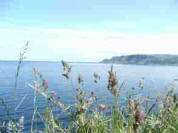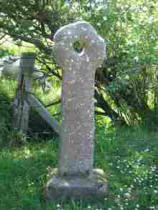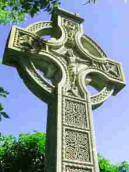 Church Church
Tradition has it that the parish church at Layd (broad
place), established in 1306, replaced and earlier religious
house. It ceased to be used as a parish church in about 1790,
and was replaced by a new building in Cushendall.The long
narrow church is built of local red sandstone and schist. In
later years it is known to have had a thatched roof. The present
doorway in the south wall has a semi-circular arch, with a stone
above it dated 1696. A most unusual feature is a tower at the
west end, the purpose of which is very uncertain. It is
generally thought to have provided accommodation for a priest.
Coastal Path
Hugging the cliffs to the south is an attractive coastal path
leading to Cushendall Bay. On a clear day there are spectacular
views of the Scottish coast, Lurigethan, Red Bay Castle and
Garron Plateau. The round trip can be accomplished comfortably
in an hour, but please note the path is steep in places.
Graveyard
 The
graveyard stands besides a fast flowing stream that cascades
into the sea at Port Obe. It contains many fine gravestones,
including memorials to members of the MacDonnell family and
others which illustrate the areas maritime and Scottish
connections. The unusual cross with a hole in the centre,
standing beside the entrance to the graveyard, is much older
than its inscription suggests. The
graveyard stands besides a fast flowing stream that cascades
into the sea at Port Obe. It contains many fine gravestones,
including memorials to members of the MacDonnell family and
others which illustrate the areas maritime and Scottish
connections. The unusual cross with a hole in the centre,
standing beside the entrance to the graveyard, is much older
than its inscription suggests.
A large celtic cross marks the burial place of Doctor James
MacDonnell co-founder of a hospital in Belfast that was later to
become the Royal Victoria Hospital, Belfast and of the Belfast
School of Medicine which became the Queens University |